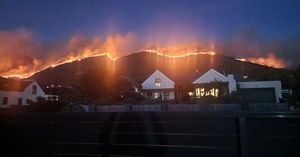On April 28, 2025, a massive blackout swept across large parts of Spain and Portugal, plunging millions into darkness and disrupting daily life. The outage began around 12:30 PM, with energy consumption plummeting from approximately 25,184 megawatts to 12,425 megawatts in just five seconds. This unprecedented event left many citizens without electricity or internet access, leading to chaos in schools, hospitals, and transportation systems.
As the situation unfolded, the Red Eléctrica de España announced that it would take between six to ten hours to restore power, although they later admitted that predicting the exact timeline for full recovery was impossible. By 1:35 PM, power began to be restored in various regions, and by 3:30 PM, several areas in the north, south, and west of the peninsula were back online. However, the Balearic Islands, Canary Islands, Ceuta, and Melilla were reportedly unaffected.
By 7:00 PM, all affected communities had started to recover power, with citizens anxiously awaiting sunset. The recovery was aided by 5,508 megawatts sourced from autonomous production and interconnections with France. However, significant challenges remained, particularly in Madrid, where the mayor warned that public lighting was not guaranteed for the night.
In response to the blackout, the Ministry of Education in Andalusia suspended in-person classes for the afternoon, with plans to resume normal operations the following day. Schools in Castilla-La Mancha and Cantabria also closed, while Madrid experienced confusion regarding school directives. Some schools, like Los Ángeles de Getafe, with 1,200 students, faced communication issues due to the lack of internet and power.
In Catalonia, schools remained open until families could pick up younger students, with the regional education secretary urging calm. Most schools in the Basque Country kept students in class until power was restored, while the University of the Basque Country suspended classes without academic consequences.
Despite the chaos, some institutions managed to adapt. The University of Almería, for instance, experienced only a brief 10-second outage thanks to its solar energy generation capabilities. Meanwhile, the University of Zaragoza announced it would resume classes on Tuesday, April 29, provided power remained stable.
Transportation was severely affected, as Adif, the Spanish railway infrastructure manager, suspended all train services until further notice. Reports indicated that 11 trains remained stranded, with emergency services working to rescue passengers. In Madrid, the mayor urged residents to minimize travel, emphasizing the need for safety amid the ongoing crisis.
Air travel was also impacted, with Iberia canceling 23 of its 247 scheduled flights, offering passengers the option to change their tickets. Aena, the airport operator, extended operating hours at some airports to accommodate reprogrammed flights.
As the blackout continued, the Spanish government declared a national emergency in several regions, including Andalusia, Extremadura, Murcia, La Rioja, Madrid, Galicia, and Castilla-La Mancha. The Minister of the Interior stated that the declaration was necessary to coordinate efforts to alleviate the effects of the outage.
In Madrid, the situation was described as chaotic, with the mayor confirming that emergency services were deployed to maintain order. The city activated its emergency plan, and over 7,000 Mossos d'Esquadra agents were mobilized in Catalonia to assist with public safety.
As the hours passed, the Red Eléctrica de España reported that nearly 50% of the power supply had been restored by 10:30 PM. However, the full normalization of the electrical grid could take up to a week, due to the complexity of the situation and the need to rebalance electricity flows at an international level.
Pedro Sánchez, the President of the Government, addressed the nation multiple times throughout the day, urging calm and emphasizing that the priority was to restore electricity. He confirmed that the blackout was due to a sudden loss of 15 gigawatts of generation, which had never occurred before in such a manner.
In the aftermath of the blackout, various reports emerged detailing the challenges faced by citizens. Many found themselves trapped in elevators, while others struggled to access basic necessities as supermarkets experienced long lines. The police issued warnings about potential scams related to the outage, advising the public to rely only on official sources for information.
As night fell, hospitals and critical infrastructures remained operational thanks to backup generators. However, many scheduled surgeries were postponed, and healthcare providers were urged to prioritize urgent cases. The emergency services reported a surge in calls related to anxiety and health issues stemming from the outage.
In summary, the blackout of April 28, 2025, marked a significant crisis for Spain and Portugal, exposing vulnerabilities in the electrical grid and prompting a nationwide response to restore normalcy. As recovery efforts continued, citizens were left to navigate the aftermath of an event that had disrupted their lives in unprecedented ways.






